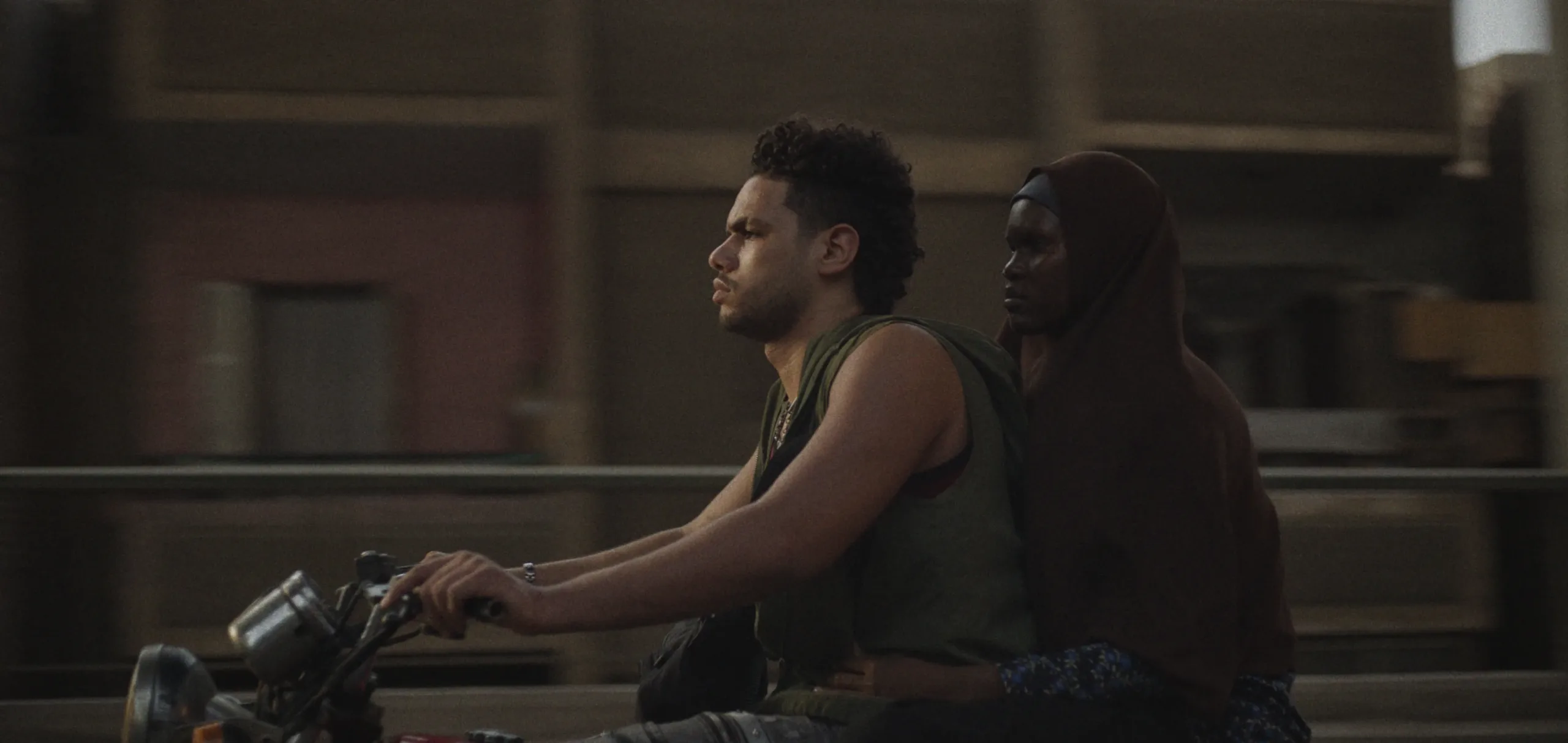Aisha Can’t Fly Away marks Morad Mostafa’s striking feature debut. Set in Cairo’s sprawling Ain Shams district, the film follows 26-year-old Sudanese caregiver Aisha (Buliana Simon) as she moves between crowded markets, shadow-lit alleyways and the cramped apartments where she tends to her clients.
Each day begins with household chores and medication rounds, yet concludes with the same grim bargain: she must copy a client’s key for local gang leader Zuka in exchange for shelter. Through lingering shots of her expressionless face broken only by a fleeting smile during phone calls home, the film establishes its rhythm as a quietly relentless drama tinged with surreal flourishes.
Simon’s performance anchors the piece—her steady poise feels lived-in, as though every bruise and burden has etched itself into her posture. The slow-burn unfolding of Aisha’s plight hints at hidden terrors beneath everyday tasks, inviting viewers into a world where survival requires both grit and quiet endurance.
Narrative & Character Dynamics
Mostafa structures the story around Aisha’s routine: scrubbing floors, preparing meals, administering syrups and pills. These tasks underscore her isolation—her eyes absorb every detail, yet give away nothing. Early on, Zuka’s men emerge from a dusty courtyard, shadowing her apartment building.
Their demand for duplicate keys sets the stakes: protection purchased through consent to theft. When a robbery goes awry, Aisha is reassigned to Mr. Khalil’s apartment, a turning point that traps her in new abuses. Khalil’s wheelchair-bound frame hides a predatory nature; his insistence that caregiving includes sexual favors forces Aisha into an impossible choice, one she meets with stoic resignation.
Moments of solidarity offer respite. Tawfiqah, a fellow Sudanese immigrant, shares hushed laughter during street-corner conversations, while Abdoun, a local chef, slips her warm dishes that bring color to her muted world. These small acts feel charged—simple kindnesses that contrast with the violence simmering in crowded streets.
Then the body horror emerges: Aisha wakes to find a rash spreading across her torso, a physical echo of her psychological wounds. Each development shifts the narrative, guiding us deeper into her inner life without losing sight of the social forces that shape her fate.
Visual Style & Genre Mixing
Cinematographer Mostafa El Kashef wields a handheld camera like an extension of Aisha’s perspective, trailing her through chaotic markets and crumbling stairwells. In daylight, the cramped alleys feel claustrophobic; after dusk, pools of lamplight carve out noirish pockets where danger lurks just off-screen. Close-ups linger on Simon’s face—every twitch of an eyebrow or flicker of her gaze becomes a clue to her inner world.
Production design underscores contrast: the bright chaos of street life versus the stark spartan interiors of her rented room. These spaces feel lived-in yet haunted, as though memories linger on peeling walls. Magic-realist moments arrive unannounced: an ostrich appears in flash-cuts—its long neck and blank stare intruding on real-world scenes.
The awkward cut from caregiving chores to body-horror sequences, where Aisha examines her rash in a dim bathroom mirror, challenges the film’s realism. Sometimes these shifts heighten the sense of entrapment, yet at other times they risk pulling attention from the human drama at the core.
Themes & Symbolism
At its center, Aisha Can’t Fly Away confronts exploitation and power imbalances. Aisha’s silence becomes a shield she wields against men who seek to control her body and labor. The repeated image of the ostrich—an animal famed for its flightlessness—mirrors Aisha’s own predicament: taught to hide, expected to stay grounded. Yet her growing rash suggests an involuntary metamorphosis, a physical manifestation of pent-up anguish that can’t be contained.
Solidarity emerges as an act of quiet rebellion. Shared bread with Abdoun or whispered confidences with Tawfiqah transform fleeting moments into lifelines. These small mercies highlight the gulf between Aisha’s social invisibility and her inner resilience.
The film uses body horror sparingly but to sharp effect—every scab and welt on Aisha’s skin reads like a ledger of her suffering, turning her body into a battleground. This visual metaphor invites reflection on the costs borne by caregivers whose work often goes unacknowledged. In drawing attention to hidden labor and the systems that devalue it, the film leaves an afterimage of both dread and admiration for those who endure in silence.
Aisha Can’t Fly Away premiered in the Un Certain Regard section at the 2025 Cannes Film Festival on May 20, 2025.
Full Credits
Director: Morad Mostafa
Writers: Morad Mostafa, Sawsan Yusuf, Mohamed Abdelqader
Producers: Sawsan Yusuf, Dora Bouchoucha, Sherif Fathy, Ahmed Amer, Alaa Karkouti, Maher Diab, May Odeh, Zorana Musikic, Laura Nikolov, Abellelah Al Ahmary
Cast: Buliana Simon, Ziad Zaza, Mamdouh Saleh, Emad Ghoniem, Maya Mohamed, Mohamed Abd Elhady
Director of Photography (Cinematographer): Mostafa El Kashef
Editor: Mohamed Mamdouh
Composer: Amin Bouhafa
The Review
Aisha Can’t Fly Away
Aisha Can’t Fly Away delivers a haunting portrait of survival under systems that silence and exploit. Buliana Simon commands every frame with her steady presence, while Mostafa’s camera places us at the edge of Aisha’s world—from cramped alleys to surreal body-horror visions. Though its magical-realism moments occasionally pull focus, the film’s emotional core remains powerful and resonant.
PROS
- Buliana Simon’s commanding performance anchors the film
- Cinematography that immerses viewers in Cairo’s textures
- Subtle genre shifts heighten the sense of unease
- Moments of solidarity offer emotional respite
- Body-horror imagery externalizes Aisha’s inner turmoil
CONS
- Ostrich-fantasy sequences can feel abrupt
- Deliberate pacing may challenge some viewers
- Secondary characters lack full development
- Surreal elements occasionally pull focus from the core drama
- Limited moments of emotional release
